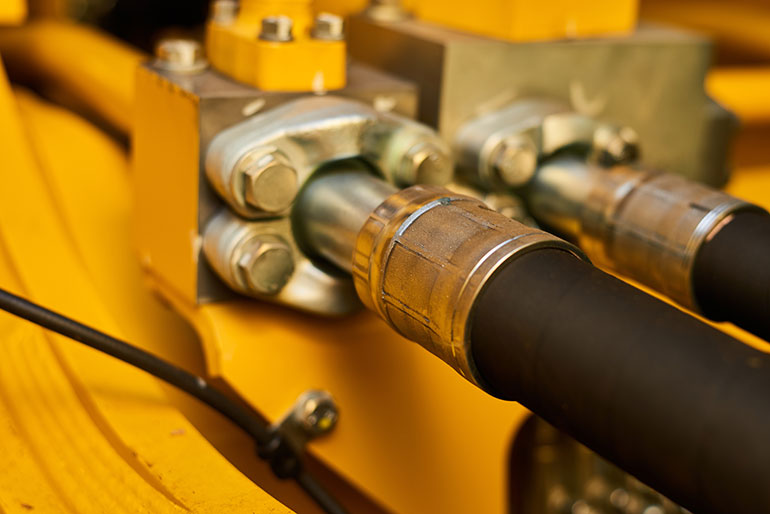By Josh Cosford, Contributing Editor
There are three ways to plumb a hydraulic system — rigid systems, flexible systems or a combination of the two. Rigid systems include pipe and various forms of tube, while flexible systems are assembled using only hydraulic hose. Most machines today are created using a combination of fixed plumbing, where no movement needs to occur, and flexible plumbing (hoses), where bending and flexibility are required.

A common form of fluid connection for modern hydraulics is the flange. These are available in a few international standards, and what you use will depend on where you live. The SAE J518 style is commonly used in North America in their Code 61 and Code 62 variations. And if you’re in other parts of the world, those standards could be ISO 6164, CETOP or JIS B 2291.
No matter the standard, they’re all a great way to connect plumbing to your pumps, cylinders, motors, valves and manifolds. There is no need to twist or turn the hose or tube to tighten the connection, as is required with other connection threads such as NPT or BSPP. For a flange, you only need to place the flange against the port, install four bolts, and tighten it to spec.
A welded flange is machined with a conical bevel to provide a pocket for the weld bead to reside. Without this bevel, a butt weld would offer little to no strength, especially at high pressure. When installing permanent plumbing, the flange is first bolted in place, and then the terminating end of the tube, which also has a bevel, is tack welded into place to be completed later. If you’re sure the final tube assembly sits as it will for its final iteration, the tube may be welded to the flange entirely. Just remember to do so without the flange O-ring installed.
A welded flange can be used to connect manifolds, junctions or inline joints, as well as for the ports of components. Realistically, and especially for industrial installations, fixed plumbing may be suitable for an entire machine. Many industrial machines have no pivoting joints that require a hose, and the result is a permanent solution with little to no maintenance required.
A bolted flange is one where an intermediate connection must be used to join the plumbing to the port. The flange will be thicker than weld flanges, as there must be enough depth to allow a port to be drilled and tapped into it. The port can be of any traditionally available to hydraulics, such as NPT, ORB, BSPP, or metric. Those female ports will then employ an adapter of some sort to provide the actual plumbing connection, which, again, may be tube or hose.
The JIC male adapter installed into the flange makes a popular choice, mainly because of the ease of installing a female hose that ends with a swivel. One of the various tube connections that uses ferrules or other locking devices makes a semi-permanent connection nearly as rigid as a weld connection.
Whether welded or bolted, the flange connection is growing in popularity due to its ease of installation, strength of connection and simple maintenance requirements. If you’re plumbing your system from scratch, a solid plan using welded flanges provides
the best long-term solution. However, upgrades or rebuilds might benefit from the flexibility of bolted flange connections.
Filed Under: Components Oil Coolers, Engineering Basics, Featured, Fittings, Couplings & Adapters, Hose Assembly Tips